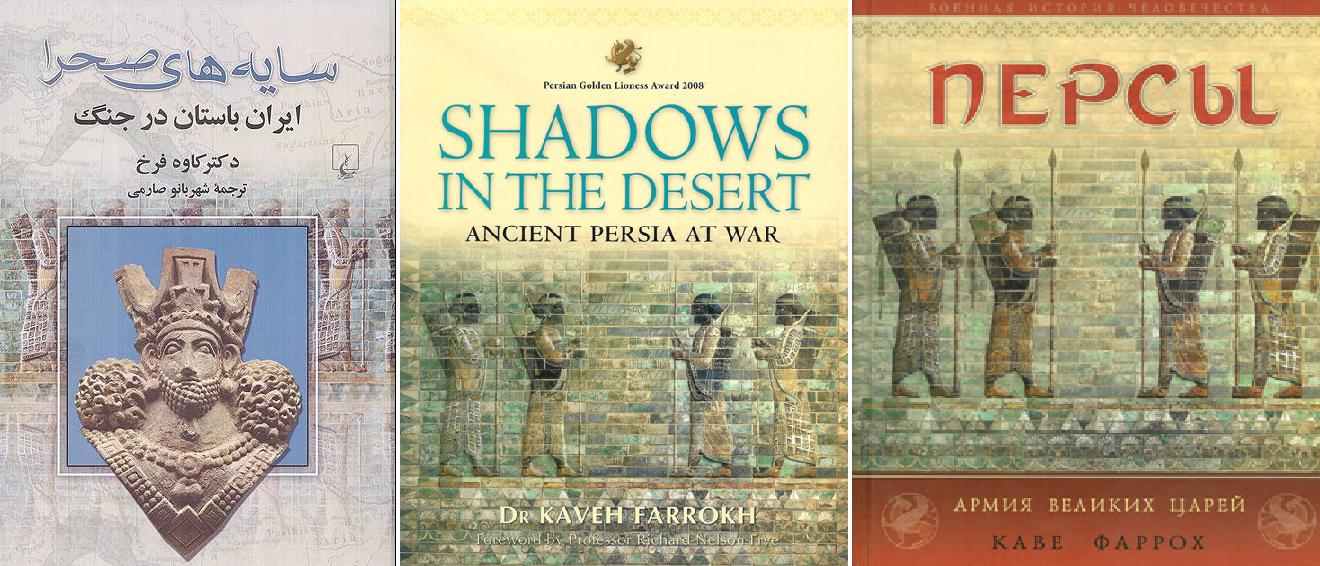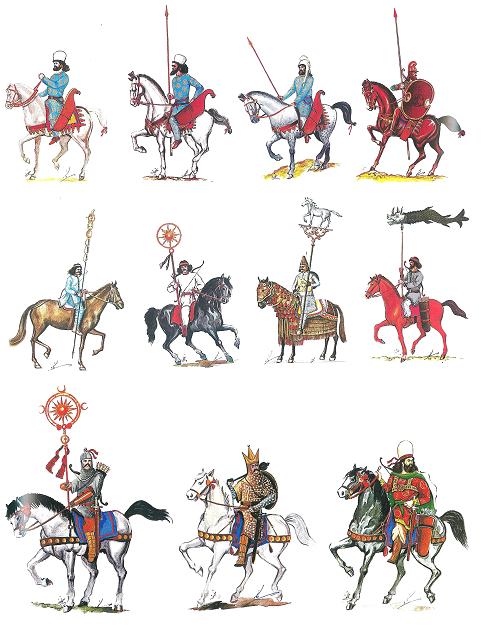The prestigious Italian peer-reviewed journal, the Quarderni Asiatici published a major review by Dr. Manouchehr Moshtagh Khorasani entitled:
Recensioni Libri (Shadows in the Desert: Ancient Persia at War). Quarderni Asiatici 95, n. 95 – Settembre 2011, pp. 105-119.

Shadows in the Desert Ancient Persia at War (2007) by Kaveh Farrokh – Recent Persian translation by Qoqnoos Publishers with the English to Persian translation having been done by Shahrbanu Saremi (LEFT), The original publication by OspreyPublishing (CENTER) the Farrokh text translated into Russian (consult the Russian EXMO Publishers website) (RIGHT).
Below are portions of that review by Dr. Khorasani in the Quarderni Asiatici jounral:
Dr. Kaveh Farrokh has done extensive research on Ancient Iran consulting not only international sources but also Iranian sources and, in this book, has combined a general history together with the product of his extensive research on the military history of the Ancient Iran. As far as the military history of the Achemenian, Parthian and Sassanian periods is concerned, without any doubt, this book is and will remain a very important source and an extremely valuable one. In addition, the book has a beautiful design and contains many interesting pictures. Thus, Shadows in the Desert: Ancient Persia at War can be described in one word: “excellent.”
Dr. Manouchehr Moshtagh Khorasani is a leading authority on the military history of Iran and the Near East as well as a leading scholar in the history of weapons (traditional arms and firearms) from Iran and the Near East (see for example an article in Iranian.com). Consult the Legat Publishing website for a list of Dr. Khorasani’s publications (books and journals) as well as his official website. See also Dr. Khorasani’s lecture at M.I.T. on the History of Iranian Swords and Weapons.
Dr. Khorasani further avers in the Quarderni Asiatici jounral::
There are many points that make this book an indispensible volume for the study of the military history of Iran. I will explain these points one by one in this review. But just in the beginning I would like to stress that Shadows in the Desert: Ancient Persia at War is unique as it describes the battle formations and tactics and strategies employed by Iranian warriors on the battlefield. Many history books lack precisely this description of military tactics. They pay only cursory attention to the warfare and instead expend much space on describing the court politics, politics, economics, dating of the events, religion, philosophy, art and social relationships.
(Left) Horse bit from Luristan tenth to seventh centuries BC on pp. 15 (center) Achaemenid winged Persian leonine in Rhython design on pp. 105 (right) Sassanian era metalwork with Senmurv emblem om pp. 256.
Dr. Khorasani further states in the Quarderni Asiatici jounral::
For military historians, ancient weapons analysts, and people interested in swordsmanship and ancient warfare, this book represents a unique gem. As it exactly does what its title reveals “an accurate analysis of ancient warfare in Iran”. But Shadows in the Desert: Ancient Persia at War is not only about the wars of Ancient Iran. It also gives a thorough analysis of the history of different dynasties of ancient Iran providing a meticulous research and cross-referencing. Iran has a very good level of scholarship and Shadows in the Desert: Ancient Persia at War makes extensive use of Iranian sources. This factor gives the book additional weight…
(Top row) Perso-Mede cavalry from the Achaemenid era on pp. 38 (center row) Parthian cavalry officers and standard bearers on pp. 130 (bottom row) Sassanian cavalry commanders or Savaran Salar on pp.203.






